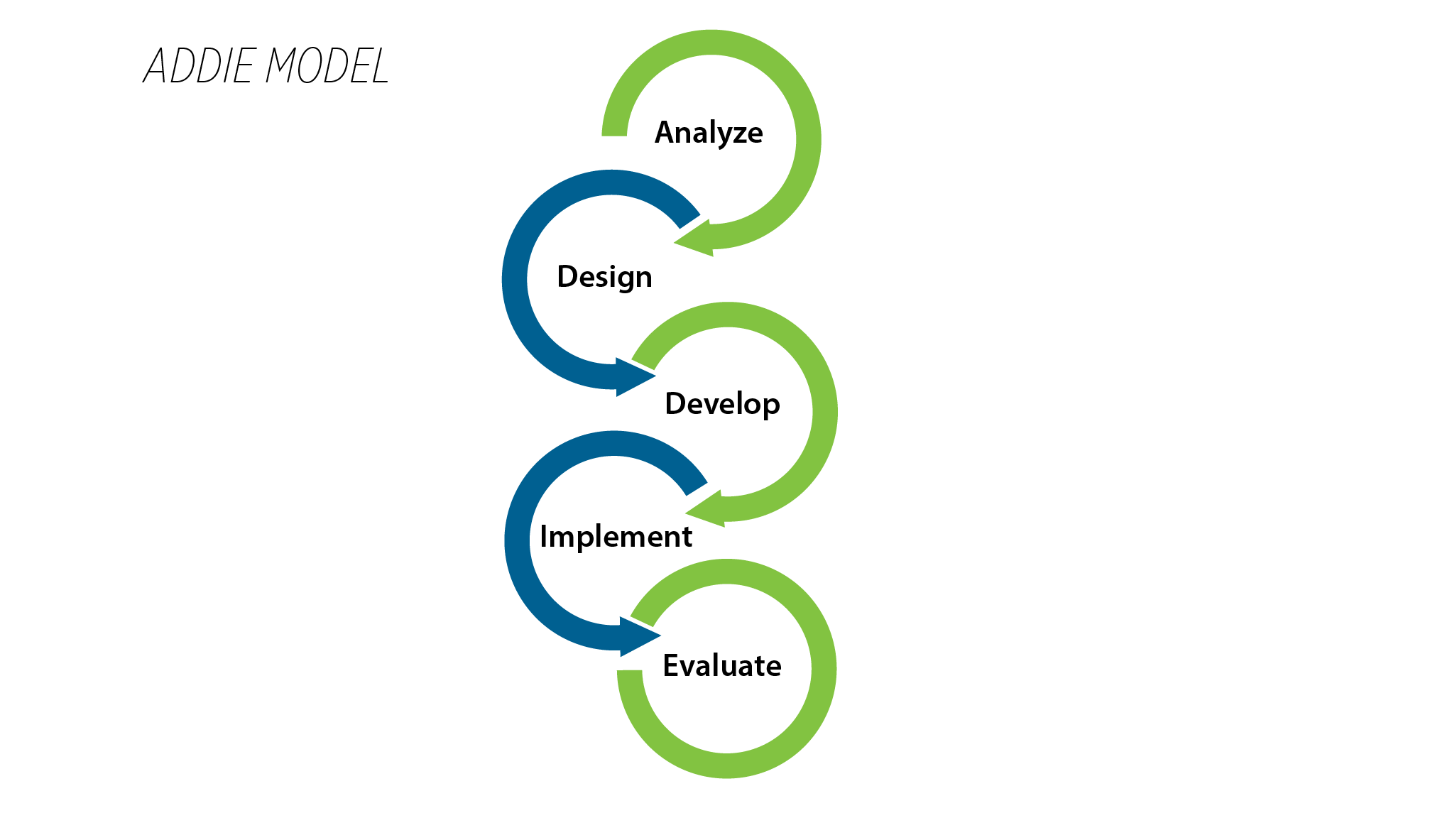 The ADDIE Model of instruction systems design (ISD) was first developed for the U.S. Army during the 1970s at Florida State University’s Center for Educational Technology, and it was later adapted for use by all branches of the U.S. Armed Forces. The model has become a widely used and frequently modified practice within the private sector, especially for compliance training and learning events that are not time-sensitive
The ADDIE Model of instruction systems design (ISD) was first developed for the U.S. Army during the 1970s at Florida State University’s Center for Educational Technology, and it was later adapted for use by all branches of the U.S. Armed Forces. The model has become a widely used and frequently modified practice within the private sector, especially for compliance training and learning events that are not time-sensitive
One of the attractions of the ADDIE Model is its flexibility; for example, it can be used with both individualized and traditional instruction. In addition, its phases are frequently modified to suit user needs, and it can be used in combination with other models, such as rapid application development (RAD) and the successive approximation model (SAM).
A disadvantage of ADDIE is that it is a linear process, which is more costly and time-consuming than the newer approaches referred to as agile development. This complaint has led to innovative approaches that follow these agile models.
ADDIE is an acronym for the five phases of this approach to courseware development:
1. Analysis: The training professional identifies and details the instructional challenge of the course, the learning objectives and issues such as learner skill level.
2. Design: The training professional addresses a variety of concerns to achieve optimal courseware design and systematic program development. These factors include learning objectives, content, assessment instruments, exercises, subject matter analysis, lesson planning and media.
3. Development: The training professional creates the content following the design phase’s blueprint, which includes storyboards and graphics, as well as the integration of e-learning technologies (if applicable).
4. Implementation: This phase focuses on developing procedures for training both the facilitators and the learners. Facilitator training should explain the curriculum, learning outcomes, method of delivery and testing procedures. Student preparation includes training them on the use of new software and hardware and how to register. The training professional also prepares the learning materials and tests e-learning.
5. Evaluation: The evaluation phase is ongoing throughout the design process. Its purpose is to ensure that all learning goals will meet the specified business needs. The training professional also identifies on-the-job performance goals and ensures that business needs are met.
Related Content:
